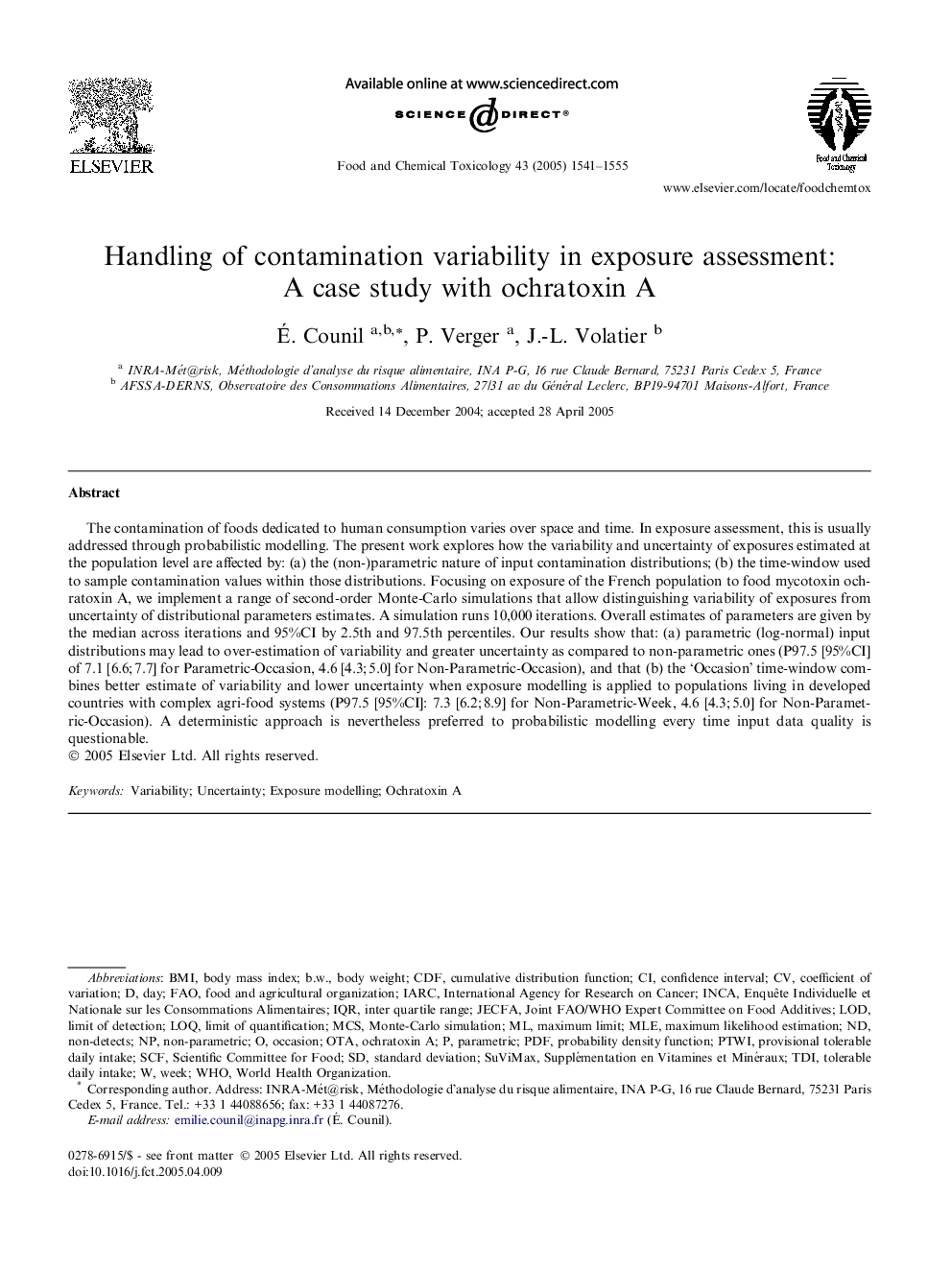| Article ID | Journal | Published Year | Pages | File Type |
|---|---|---|---|---|
| 9030633 | Food and Chemical Toxicology | 2005 | 15 Pages |
Abstract
The contamination of foods dedicated to human consumption varies over space and time. In exposure assessment, this is usually addressed through probabilistic modelling. The present work explores how the variability and uncertainty of exposures estimated at the population level are affected by: (a) the (non-)parametric nature of input contamination distributions; (b) the time-window used to sample contamination values within those distributions. Focusing on exposure of the French population to food mycotoxin ochratoxin A, we implement a range of second-order Monte-Carlo simulations that allow distinguishing variability of exposures from uncertainty of distributional parameters estimates. A simulation runs 10,000 iterations. Overall estimates of parameters are given by the median across iterations and 95%CI by 2.5th and 97.5th percentiles. Our results show that: (a) parametric (log-normal) input distributions may lead to over-estimation of variability and greater uncertainty as compared to non-parametric ones (P97.5 [95%CI] of 7.1 [6.6;Â 7.7] for Parametric-Occasion, 4.6 [4.3;Â 5.0] for Non-Parametric-Occasion), and that (b) the 'Occasion' time-window combines better estimate of variability and lower uncertainty when exposure modelling is applied to populations living in developed countries with complex agri-food systems (P97.5 [95%CI]: 7.3 [6.2;Â 8.9] for Non-Parametric-Week, 4.6 [4.3;Â 5.0] for Non-Parametric-Occasion). A deterministic approach is nevertheless preferred to probabilistic modelling every time input data quality is questionable.
Keywords
INCAIARCJECFASCFTDIIQRb.w.OTAMLEMCsLOQCDFInternational Agency for Research on Cancerstandard deviationOchratoxin AMaximum likelihood estimationCumulative Distribution FunctionProbability density functionVariabilityinter quartile rangeDAYWorld Health Organizationbody mass indexBMIMonte-Carlo simulationCoefficient of VariationUncertaintyfood and agricultural organizationNon-detectsNon-parametricFAOconfidence intervalLodJoint FAO/WHO Expert Committee on Food Additiveslimit of quantificationlimit of detectionExposure modellingTolerable daily intakeprovisional tolerable daily intakePTWIweekbody weightParametricPdfWHO
Related Topics
Life Sciences
Agricultural and Biological Sciences
Food Science
Authors
Ã. Counil, P. Verger, J.-L. Volatier,
